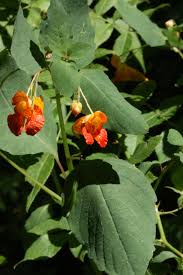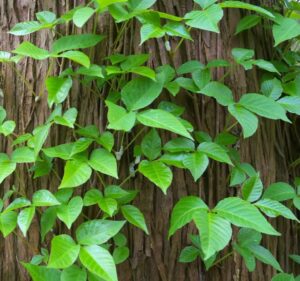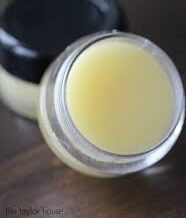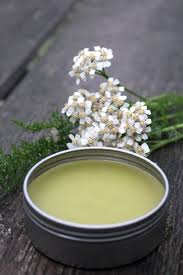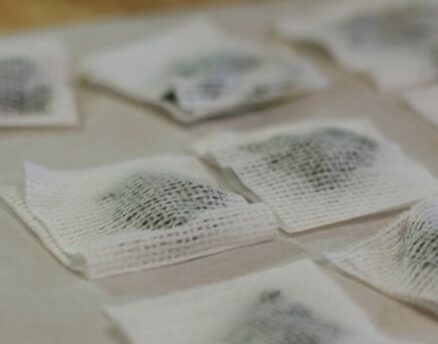How to an Make Herbal Oil Infusion
Supplies needed
Herbs. Dried herbs are best for a slow cold infusion. Fresh herbs, wilted herbs, or dry herbs can be used with the quick heat method.
A carrier oil of choice, such as jojoba oil, olive oil, sweet almond oil, or other.
A glass container with a tight-fitting lid. Use something as small as a half-pint mason jar, or as large as a half-gallon jar! The size simply depends on how much herb infused oil you intend to make.
Fine-mesh colander, reusable nut milk bag and/or cheesecloth for straining.
Storage containers for finished oil, such as glass jars or amber dropper bottles.
Optional: a slow-cooker or double boiler and probe thermometer (only if you intend to use the quick heat method)
Should I wash herbs before drying them?
It depends. Some gardeners and herbalists avoid washing herbs before drying because the added moisture may prevent them from drying properly and potentially lead to mold. This is especially a concern when air-drying herbs, but shouldn’t be an issue when using a food dehydrator. If herbs are particularly dirty, the extra step of washing them may be preferred. Shake them out well (or even toss them in a salad spinner) to remove excess water after washing. I personally only wash herbs that I plan to use in cooking.
Option 1: Slow Cold Infusion
The first option is the easiest, but does require a little patience: simply allow dry herbs to soak in oil at room temperature for several weeks. Known as slow or cold infusion, this method relies on a passive process to gently extract beneficial compounds from the herbs. Since it’s not exposed to heat, the maximum therapeutic properties of both the oil and herbs are retained. The herbs should soak in oil for a minimum of 2 or 3 weeks, up to 4 to 6 weeks for the most medicinal oil possible.
Directions
Start by filling a clean glass container at least two-thirds full with dry herbs. Feel free to fill the container even more to create a stronger infusion. Yes, you can mix several different types of herbs together if you’d like!
Pour oil over the dry herbs until they’re completely covered by at least an inch or two of oil (though they may float, that’s okay). If you wish to get more technical and measure, aim for an herb to oil ratio of about 1 part dry plant material by weight to 5 parts oil by volume. For example, 1 ounce of herbs to 5 fluid ounces of oil.
Add a lid and set the jar in a dark place to infuse for several weeks. Some herbalists like to use the “solar infusion” method, steeping the herbs and oil in a sunny window to garner luminary warmth and energy. Yet others say that sunlight can reduce the potency of herbs or make oil go rancid more quickly. So, it’s a bit of a controversial topic! We’ve done both methods and never had oil spoil on us.
Though not necessary, you can give the jar of oil a gentle shake or tilt from time to time. This is especially helpful during the first few days to rotate/submerge any “floaters” on top.
Occasionally, condensation may develop near the top portion of the jar. If you notice this, simply open the jar and wipe it away with a clean paper towel.
When the time is up, strain the herbs from the oil. I place a nut milk bag or layer of cheesecloth inside of a fine colander perched on top of a bowl, and then pour the oil through both. After it sits to drain a bit, I wring out any leftover oil from the herbs by squeezing the nut milk bag or cloth. Compost the leftover herbs.
Transfer the finished herb infused oil into a clean storage container with a lid, and store it in a cool dark place. I like to use amber dropper bottles for face and body oil, storing the excess in a larger jar in the fridge for refills. The dark glass protects the medicinal herb oil from light degradation, so I can safely keep it out on my bathroom counter too. (See shelf life information below.)
Option 2: Quick Heat Method
The quick heat method is a simple, fast way to create herb infused oils without waiting for them to passively steep. Though we’ll be lightly heating the herbs and oil, it’s important to keep everything at 110°F or below to avoid degrading the quality of the oil and herbs. It’s okay to use fresh, wilted, or dry herbs with this method.
Directions
Start by chopping up the herbs you wish to infuse. Smaller pieces = more surface area = stronger infusion.
Add the herbs to a slow cooker (crock pot) or the top portion of a double boiler on the stove. If you don’t have a double boiler, create your own by nesting a glass bowl or smaller pot inside of a larger pot of water below. The top/inner pot should touch the water, but not rest all the way on the bottom of the lower pot.
Pour over enough oil to submerge and cover the herbs by at least an inch or two. It isn’t necessary to measure, but you can if you wish. For fresh herbs, aim for an herb-to-oil ratio of 1 part fresh herbs by weight to 3 parts oil by volume (e.g. 1 ounce fresh herbs to 3 fluid ounces oil). For dry herbs, use 1 part dry plant material to to 5 parts oil by volume (e.g. 1 ounce dried herbs to 5 fluid ounces oil). For wilted herbs, use a ratio of 1:4.
Gently heat the oil, but do not boil it. Between 95 and 110°F is ideal. Check the temperature with a probe thermometer and adjust the heat if needed. In a crockpot, use the lowest temperature or “keep warm” setting.
Allow the oil and herbs to simmer together for at least 30 minutes, up to several hours for a more potent infusion. (Some medicinal herb oil recipes call for 12 to 24 hours in a slow cooker). Important: To prevent spoilage, leave the lid off so moisture from the fresh herbs can evaporate and escape. The more fresh the herbs, the longer I suggest lightly heating to ensure water content is reduced.
Finally, strain and store the oil as explained in the “slow infusion method” section above.
One time we do use the quick heat method is to make hemp-infused oil, shown in our makeshift double boiler (a smaller pot nested inside a larger pot with water in the bottom).
A fine sieve metal strainer with a layer of cheesecloth over the mesh is positioned over a glass bowl.
We sometimes use organic cheesecloth to strain herb oils, but mostly use reusable/washable nut milk bags nowadays!
How long does herb infused oil last?
The shelf life of herbal oils varies depending on the type of carrier oil used, if the herbs were adequately dried before steeping, and how the oil is stored. Most herb infused oils should stay good for about a year when made with dry herbs and stored sealed in a cool, dark place.
Some oils have a naturally shorter shelf life than others (such as grape seed and sweet almond oil), while jojoba oil can stay good for 5 years or more! Furthermore, refrigeration may be recommended for some oils. Refer to the oil manufacturer’s instructions, and see the expected shelf life of various carrier oils here.
If the herbal oil is used to make salve, lip balm, lotion, soap, or other goodies, the shelf life is extended since other preservatives are often used in those items. Beeswax is an excellent natural preservative for example!
Visible mold and/or sour, putrid, or otherwise “off” odors are signs that oil has gone bad or rancid and should be discarded. However, cloudiness is not usually a sign of spoilage (unless accompanied by a bad smell) and can be common in herb infused oils.
Ways to use herb infused oil
Here are some general ideas and ways to use medicinal herbal oils, but use your noggin’! Be sure the use is appropriate and safe for the type of carrier oil and herbs you used.
As body oil or massage oil
Facial moisturizer – just a few drops will do!
Work a few drops through damp hair to soften hair and smooth split ends.
As an ingredient in other homemade body care products like salve, soap, cream, lotion, lip balm, ointment, or other natural skincare products. Check out our lip balm and salve recipes here! For more ideas, I highly recommend this organic body care recipe book. It’s loaded with awesome recipes!
If you used an edible carrier oil, you can use your herbal oil as a tasty marinade, salad dressing or in other culinary creations.
As part of your oil cleansing method
As spot treatment directly on scars, stretch marks, varicose veins, or other areas of concern.
To soothe rashes, bug bites eczema, psoriasis, scrapes, burns, or other skin irritations
On cracked heels, cuticles, feet, dry elbows, or other rough patches of skin.
On chapped or cracked lips, or around your nose when it’s chaffed.
To treat cradle cap on babies (check your carrier oil safety first).
To remove makeup (but avoid contact with sensitive areas around your eyes)
Calendula-infused oil turned into homemade calendula salve. This stuff does WONDERS for the skin!








